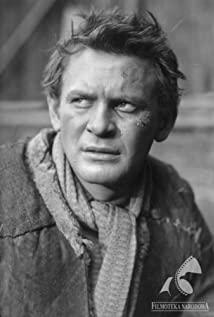This may be a simple story, which can be summed up in one sentence: At first, the male protagonist had a crush on the female protagonist; later, the male protagonist no longer had a crush on the female protagonist, but the female protagonist began to have a crush on the male protagonist. However, this is by no means a straightforward story: some seemingly due segments are deliberately omitted, requiring the audience to complete it themselves; while seemingly irrelevant information is deliberately emphasized. The director doesn't seem content to tell the story in the usual way. So, let's talk about what "superfluous" information means. In the play, there is a very funny (and no lines) man in white. It's interesting because his two appearances in the play are highly similar and seem pointless. Once after the male protagonist confessed, and once after the male protagonist had physical contact with the female protagonist. Both times were on the garden path, and the male protagonist walked towards him and looked at each other; each time, he stopped and looked at the male protagonist, all dressed in white, carrying brown luggage in his right hand, and even his posture was almost fixed. constant. When he appeared for the first time, he was not so abrupt: the male protagonist was ecstatic, running on the trail, almost hitting the passerby. The second time he appeared, he was even more out of tune with the environment: the white clothes in the dark night, the unusual face-to-face, and especially the almost identical movements from the last time, made people feel that this arrangement meant something.
From the plot point of view, during these two encounters, the male protagonist's feelings towards the female protagonist are completely different. The first time was about the joy of meeting a crush, and there seemed to be nothing else in life; the second time was the despair brought about by the double collapse of values and emotions, and life had lost its meaning. However, the huge turning point of the plot is not reflected in the man in white. He seems to be completely separated from the male protagonist, not only has nothing to do with the inner world, but also in the physical world. In addition, the first encounter is a close-up shot, while the second encounter is an overhead shot, which represents the perspective of the heroine and reflects the change in the heroine's feelings towards the hero. The stability of the existence of the man in white is in sharp contrast with the dramatic transformation of the relationship between the male and female protagonists, which makes the emotional expression more tense. The signifier structure in Kang's theory.
In Lacan's theory, the structure of the signifier determines the behavior of the subject. The signifier is a specific item, and the signified (meaning brought by the signifier) is context-specific, that is, dependent on the signifier structure. The difference between the relationship between the subject and the signifier determines the position it occupies in the signifier structure and determines the subject's behavior; and the reason why the subject's behavior changes is that it shifts in the signifier structure. In the play, the signifier is a telescope, and the male protagonist uses the telescope to peep at the female protagonist, occupying the positions of "seeing" and "being looked at" in the signifier structure. After the drastic changes, the telescope still exists as a signifier, but The positions of the male protagonist and the female protagonist are reversed relative to them, and the emotional relationship is also reversed accordingly. Therefore, the telescope, the position of seeing and being seen still exist, but the corresponding subject has changed. Therefore, the outside world represented by the signifier structure exists stably, and the subject determines its own destiny in the change of the relationship with the signifier. The man in white is a symbol of such a stable existence.
However, the man in white seems to be more than that. If it exists only as an external structure, he should not have too much intersection with the male protagonist. In the play, compared to the image of the master, he is more like a passerby, or a stranger who has a natural concern for the male protagonist. His white clothes, his sense of distance from the world, and his caring temperament that fits perfectly with himself, all point his identity to an image—God. Although an atheist myself, I like this way of interpreting God. It has both distance and kindness, and naturally shows concern for all living beings from time to time. Only by recognizing the identity of "God" can the parallel and intersecting relationship between the man in white and the male protagonist be reasonable. As far as the development of the plot is concerned, he is dispensable; in the actual completed works, he shows a ubiquitous sign. He exists both as a confirmation and as a warning. Thus, through this image, "You shall not commit adultery" is said.
View more about Dekalog reviews











